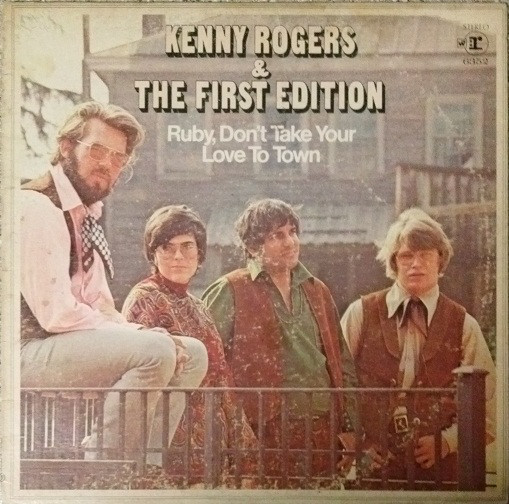
Inspired by the passing of Kenny Rogers, the March 21 birthdays of The Stylistics’ Russell Thompkins Jr., Solomon Burke, The Prodigy’s Maxim, Eddie Money, Mungo Jerry’s Ray Dorsett, Bonzo Dog Doo-Dah Band’s Vivian Stanshall; and World Poetry Day.

Inspired by the passing of Kenny Rogers, the March 21 birthdays of The Stylistics’ Russell Thompkins Jr., Solomon Burke, The Prodigy’s Maxim, Eddie Money, Mungo Jerry’s Ray Dorsett, Bonzo Dog Doo-Dah Band’s Vivian Stanshall; and World Poetry Day.
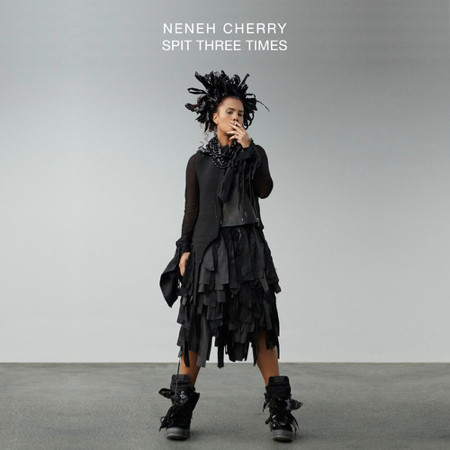
Inspired by the March 10 birthdays of Neneh Cherry, Timbaland, Dean Torrence, Boston’s Tom Scholz, Edie Brickell, Robin Thicke and Carrie Underwood.
The girl group sound was a genre of pop music that flourished on the charts between 1958 and 1966. Most records that fall into this category were made by all-female trios or quartets. However, some girl group hits were performed by solo women, and some by groups that featured a cisgender male. Per girl-groups.com, more than 750 girl groups cracked the US or UK charts between 1960 and 1966.
Tunes du Jour commemorates International Women’s Day with a playlist of forty of the best examples of the girl group sound.
Click here to like Tunes du Jour on Facebook!
Follow me on Twitter: @tunesdujour
Follow me on Instagram: @glenschwartz
Today is the day after Thanksgiving here in the United States of America. You’re officially allowed to start listening to holiday music now. To get you started, I compiled a playlist of what I consider to be 100 of the best Christmas songs. Okay, 98 songs, a stand-up routine and a skit. It’s a mix of standards, versions of standards with which you may not be familiar, and obscure but delightful tunes.
Enjoy!
Click here to like Tunes du Jour on facebook!
Follow me on Twitter: @tunesdujour
Follow me on Instagram: @glennschwartz
The girl group sound was hugely popular on the US pop charts in the early 1960s. The Shirelles, The Crystals, The Chiffons, The Angels, Martha and the Vandellas, The Marvelettes, The Exciters, The Orlons, The Cookies, The Murmaids, The Dixie Cups, The Supremes, The Toys, The Shangri-Las, The Jaynetts and others filled the radio with tales of teenage romance, heartbreak and occasionally social commentary. Solo acts such as Lesley Gore and Darlene Love also exemplified the girl group sound.
Described in the Library of Congress’ National Recording Registry as “the quintessence of the ‘girl group’ aesthetic of the early 1960s,” the Ronettes’ “Be My Baby” reached #2 in 1963. The record was produced by Phil Spector, who produced at least 15 top forty girl group songs between 1962 and 1964.
Lead vocals on “Be My Baby” were performed by Ronnie Spector. In fact, the other Ronettes aren’t even on the record. Backup singers included the girlfriend of Phil Spector’s promotion man. That man was Sonny Bono; his girlfriend was Cher. Sonny & Cher would have their first hit as a duo two years later.
This week’s Throwback Thursday playlist spotlights the hits of 1963. Here are twenty of that year’s best, kicking off with the record New Music Express named the second best song of the 1960s (their #1 was The Beatles’ “A Day in the Life”), the Ronettes’ “Be My Baby.”
Click here to like Tunes du Jour on Facebook!
Follow me on Twitter: @TunesDuJour
Follow me on Instagram: @GlennSchwartz
Some time in my teen years I feel in love with the girl group sound. My favorite was The Crystals’ “He’s a Rebel.” The music and the vocals hooked me. The singer tells of how others don’t approve of the boy she loves as he’s a non-conformist, but he treats her well and that’s all that matters.
The story behind the record is as interesting as the record itself. The song was written by Gene Pitney, who had several hits of his own, including “Town Without Pity” and “(The Man Who Shot) Liberty Valence.” “He’s a Rebel” was slated to be the debut single for Vikki Carr, but when Spector heard Pitney’s demo he knew he wanted it for one of his acts, The Crystals.
He needed to record it quickly in order to challenge Carr’s version at the stores. The Crystals, however, were on the road in New York and unable to make the recording sessions in Los Angeles. No problem. Spector hired a local group called The Blossoms, led by Darlene Wright, to record the song. Wright was paid $3000 for the session. Spector released the record under the name The Crystals, as his label owned the name. The actual Crystals first learned of their new hit song when they heard it on the radio. It became their first #1 single, meaning The Crystals had to learn this song so they could perform it at their shows. The group’s lead singer, Barbara Alston, could not match Wright’s vocal performance, so fellow Crystal LaLa Brooks moved into the lead vocalist slot. Coincidentally, the week The Crystals’ “He’s a Rebel” was #1, Gene Pitney was #2 as a singer with “Only Love Can Break a Heart,” a song he didn’t write.
As “He’s a Rebel” was so successful, Spector needed to get a follow-up single out quickly. Again, he turned to The Blossoms to record “He’s Sure the Boy I Love.” Wright, however, was angry that her name was not on “He’s a Rebel” and told Spector she would only do this song if she were singed to a recording agreement and was properly credited for her vocals on the track. Spector agreed, changing her name in the agreement to Darlene Love. He released “He’s Sure the Boy I Love.” It was credited to The Crystals.
Spector used the money he made from “He’s a Rebel” to buy out his business partners in the Philles Records label. In addition to the financial settlement, Spector had to give his two ex-partners a share of the royalties of the next Philles single release, so Spector got the real Crystals into the studio and recorded “(Let’s Dance) The Screw,” a silly number clearly not intended to be a hit. A copy was sent to one of the ex-partners. No royalties were generated.
Tunes du Jour celebrates Throwback Thursday with twenty great hits from 1962, kicking off with “He’s a Rebel” by “The Crystals.”
Click here to like Tunes du Jour on Facebook!
Follow me on Twitter: @TunesDuJour
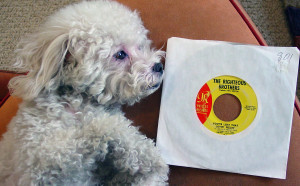
During yesterday’s Grammy Awards, the songwriting team of Barry Mann and Cynthia Weil received the Trustees Award, whatever that is. The honor was introduced by Tom Jones and Jessie J, who performed the most godawful rendition of “You’ve Lost That Lovin’ Feelin’” that has ever been foisted upon an unsuspecting world. Lost that loving feeling? More like lost their hearing, based on the way Jones and J yelled and screamed at each other. Do they not understand the concept of microphones? No need to shout, people.
To unwrong this heinous assault on the ears of the show’s viewers, Tunes du Jour presents to you a collection of twenty tunes co-written by Mann, most with his wife of 54 years, Weil. Along with the husband-wife songwriting team of Carole King and Gerry Goffin, Barry Mann and Cynthia Weil helped shape the sound of American pop music beginning in the early 1960s. Coincidentally, both Mann and King celebrate their birthdays today. For more on King, click here.
Click here to like Tunes Du Jour on Facebook!
Follow me on Twitter: @TunesDuJour
In 1958, 13-year-old Brenda Mae Tarpley went into a recording studio with famed producer Owen Bradley and cut “Rockin’ around the Christmas Tree,” written by Johnny Marks (Jew!). Released as a single for that year’s holiday season, it bombed. That really isn’t surprising. Tarpley, better known by her stage name, Brenda Lee, was virtually unknown at the time.
In 1959, her record label reissued the single. It bombed. That really isn’t surprising. Lee hadn’t dented Billboard’s Hot 100 all year.
In 1960, her record company released it yet again. Third time lucky. Coming off two #1 singles, “I’m Sorry” and “I Want to Be Wanted,” plus two other top ten hits, “Sweet Nothin’s” and “That’s All You Gotta Do,” Lee’s Christmas record peaked at #14.
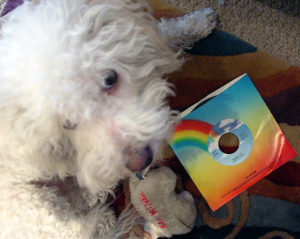
For years the hits kept coming for Lee. She placed 55 songs on Billboard’s Hot 100, including twelve top tens. These days she is perhaps best-remembered for “Rockin’ around the Christmas Tree,” a holiday staple.
Johnny Marks, the Jew who wrote the song, also wrote “Rudolph, the Red-Nosed Reindeer,” “Holly Jolly Christmas,” and “Run Rudolph Run.”
He’s not the only Jew to have written Christmas standards. Also written by chosen people? “White Christmas,” “Silver Bells,” “Winter Wonderland,” “Santa Baby,” “Sleigh Ride,” “I’ll Be Home for Christmas,” Let It Snow Let It Snow Let It Snow,” “The Christmas Song (Chestnuts Roasting on an Open Fire),” “You’re a Mean One, Mr. Grinch,” “It’s the Most Wonderful Time of the Year,” and “Give the Jew Girl Toys.” Oy gevalt!
Today Brenda Lee turns 70 years old. Our playlist today includes her classic version of “Rockin’ around the Christmas Tree” as well as nineteen other holiday tunes from the early days of rock and roll, before The Beatles took over the United States in 1964. Some were written by Jews, some were not. Some get a lot of radio airplay this time of year, some deserve more (specifically “Christmas in Jail” and “Trim Your Tree.”). All put me in the mood to rock around my menorah.
More holiday music can be found here, here, here, here, and here.
Click here to like Tunes du Jour on Facebook!
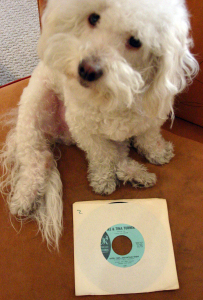
By 1966, the recording duo Ike & Tina Turner and the record producer Phil Spector could use a turnaround in their luck.
Ike & Tina Turner’s first hit song was 1960’s “A Fool in Love.” Two more top forty pop and four more r&b top ten hits followed over the next couple of years.
Phil Spector’s first hit as a producer was The Teddy Bears’ “To Know Him Is to Love Him,” a #1 pop single in 1958. Over the next seven years Phil Spector produced twenty-five top 40 pop hits, including such classics as The Ronettes’ “Be My Baby,” The Righteous Brothers’ “You’ve Lost That Lovin’ Feeling” and “Unchained Melody,” The Crystals’ “He’s a Rebel” and “Da Doo Ron Ron,” and Curtis Lee’s “Pretty Little Angel Eyes.”
Fast forward to late 1965. Ike & Tina Turner’s last top 40 pop hit was “Poor Fool,” which peaked at #38 in early 1962. It went top ten on the r&b chart, as did its follow-up, “Tra La La La,” but successive singles failed to do as well.
Despite scoring four top ten singles on Spector’s Philles Records, The Righteous Brothers sued the producer/record company head to get off the label, saying their contract was unenforceable. It was announced in early 1966 that the duo signed with another label. Their first single for that label, Verve, was a #1 hit – “(You’re My) Soul and Inspiration.” Spector lost his star attraction, and the other acts in his stable had lost luster. The Ronettes’ most recent top 40 hit was 1964’s “Walking in the Rain.” The Crystals’ most recent top 40 hit was 1963’s “Then He Kissed Me.”
In 1965 the Ike & Tina Turner Revue performed The Galaxy in Los Angeles. In the audience was Phil Spector. He loved their act and booked them to appear on The Big TNT Show, a televised concert for which he was the associate producer and musical director. Also appearing on the program were The Byrds, Ray Charles, Bo Diddley, The Lovin’ Spoonful, Donovan, Joan Baez, Petula Clark, and Roger Miller.
Spector was taken by Tina’s performance. “I said, God, if I could make a number-one record with her she could go on Ed Sullivan, she could go to Las Vegas; she could break the color barrier.” At the time, Ike & Tina were singed to Loma Records, a division of Warner Brothers Records. None of their releases hit the pop charts. Spector negotiated a release from their Loma contract. Spector wanted Tina, not Ike, so he paid Loma $20,000 to buy out the duo’s contract, on the condition that Ike stay away from the studio while Tina recorded. Ike accepted this offer, with the stipulation that the resulting record still be credited to Ike & Tina Turner.
To come up with a suitable song, Spector turned to the husband and wife songwriting team of Jeff Barry and Ellie Greenwich, who, with Spector, wrote “Be My Baby” and “Da Doo Ron Ron” and also wrote “Leader of the Pack” (with Shadow Morton) and “Do Wah Diddy Diddy.” CORRECTION: former husband and wife songwriting team – Barry and Greenfield divorced in December 1965, just a few weeks before Spector asked them to write a song for Tina.
Though freshly-divorced, they both came to the table, each with a different unfinished song. The combination of the three songs resulted in “River Deep – Mountain High,” with the melody of the verses coming from Greenwich, the melody of the chorus coming from Spector, and most of the lyrics coming from Barry.
The first of five recording sessions for the single was in February 1966. Hanging out in the control room were a couple of folks you may have heard of – Mick Jagger and Brian Wilson. To achieve his vision Spector used 21 background vocalists and 21 musicians, including Glen Campbell, Leon Russell and Hal Blaine. The completed record cost around $22,000 to make. Said Bob Krasnow, the head of Loma Records, “In those days, you could make five albums for twenty thousand dollars. And this was just a single – one side of a single.”
After years with Ike Turner, Tina must have been relieved to be able to go into the studio without Ike and with Phil Spector, a man who treated women with respect – scratch that thought. In her autobiography, I, Tina, she recounts a recording session with Spector. “That intro – ‘When I was a little girl…’ – I must have sung that five hundred thousand times, and I don’t know if I ever got it just the way he wanted it. I would sing it, and he would say, ‘That’s very close, very close. We’ll try it again.’ I don’t remember him saying, ‘Got it.’ Pretty soon, I was drenched with sweat. I had to take off my shirt and stand there in my bra to sing, that’s how hard I was working on that song.”
A River Deep – Mountain High album, with a cover photo taken by a broke Hollywood actor named Dennis Hopper, wouldn’t be released until 1969. However, the “River Deep – Mountain High” single came out in the United States on May 14, 1966. It entered the Hot 100 at #98. A week later it was #94. One week after that #93. The next week it rose to #88.
And that was it. The record that was to be the triumphant return of Ike & Tina Turner and Phi Spector stayed on the chart for only four weeks. Looking back, Tina concluded “It was too black for the pop stations, and too pop for the black stations.” Ike agreed.
After the single’s failure, Spector became a semi-recluse. It would be three years before another Phil Spector’s production was on the Hot 100.
In the United Kingdom, however, it was a different story. “River Deep – Mountain High” peaked at #3 there. George Harrison called it “a perfect record from start to finish – you couldn’t improve on it.” Harrison would later have Spector co-produce his All Things Must Pass album, which included the classic “My Sweet Lord.”
In praising Tina, Mick Jagger said “’River Deep-Mountain High’ was an excellent record because she had the voice to get out in front of Phil Spector’s so-called wall of sound.” The Rolling Stones invited Ike & Tina to open for them on their tour that began in the autumn of 1966.
In 1999, “River Deep – Mountain High” was inducted in the Grammy Hall of Fame. Rolling Stone magazine put it at #33 on its list of the 500 Greatest Songs of All Time.
Tina Turner turns 75 today. Here are twenty career highlights, kicking off with the classic “River Deep – Mountain High.”
Read more about Tina Turner here.
Click here to like Tunes du Jour on Facebook!
Some time in my teen years I feel in love with the girl group sound. My favorite was The Crystals’ “He’s a Rebel.” The music and the vocals hooked me. The singer tells of how others don’t approve of the boy she loves as he’s a non-conformist, but he treats her well and that’s all that matters.
The story behind the record is as interesting as the record itself. The song was written by Gene Pitney, who had several hits of his own, including “Town Without Pity” and “(The Man Who Shot) Liberty Valence.” “He’s a Rebel” was slated to be the debut single for Vikki Carr, but when Spector heard Pitney’s demo he knew he wanted it for one of his acts, The Crystals.
He needed to record it quickly in order to challenge Carr’s version at the stores. The Crystals, however, were on the road in New York and unable to make the recording sessions in Los Angeles. No problem. Spector hired a local group called The Blossoms, led by Darlene Wright, to record the song. Wright was paid $3000 for the session. Spector released the record under the name The Crystals, as his label owned the name. The actual Crystals first learned of their new hit song when they heard it on the radio. It became their first #1 single, meaning The Crystals had to learn this song so they could perform it at their shows. The group’s lead singer, Barbara Alston, could not match Wright’s vocal performance, so fellow Crystal LaLa Brooks moved into the lead vocalist slot. Coincidentally, the week The Crystals’ “He’s a Rebel” was #1, Gene Pitney was #2 as a singer with “Only Love Can Break a Heart,” a song he didn’t write.
As “He’s a Rebel” was so successful, Spector needed to get a follow-up single out quickly. Again, he turned to The Blossoms to record “He’s Sure the Boy I Love.” Wright, however, was angry that her name was not on “He’s a Rebel” and told Spector she would only do this song if she were singed to a recording agreement and was properly credited for her vocals on the track. Spector agreed, changing her name in the agreement to Darlene Love. He released “He’s Sure the Boy I Love.” It was credited to The Crystals.
Spector used the money he made from “He’s a Rebel” to buy out his business partners in the Philles Records label. In addition to the financial settlement, Spector had to give his two ex-partners a share of the royalties of the next Philles single release, so Spector got the real Crystals into the studio and recorded “(Let’s Dance) The Screw,” a silly number clearly not intended to be a hit. A copy was sent to one of the ex-partners. No royalties were generated.
Today is Phil Spector’s 74th birthday. He’s spending it in jail, convicted in 2009 for the 2003 murder of Lana Clarkson. What happened to Clarkson is horrible and unforgivable. That this is how many people know of Spector these days is tragic. This playlist recalls the years that Spector was known as one of the greatest producers in the history of rock and roll. Besides the tracks presented below, Spector also worked with John Lennon, producing with him, among others, a little ditty called “Imagine;” with George Harrison, producing, among others, a song you may have heard called “My Sweet Lord;” and with The Beatles, producing an album named Let It Be.